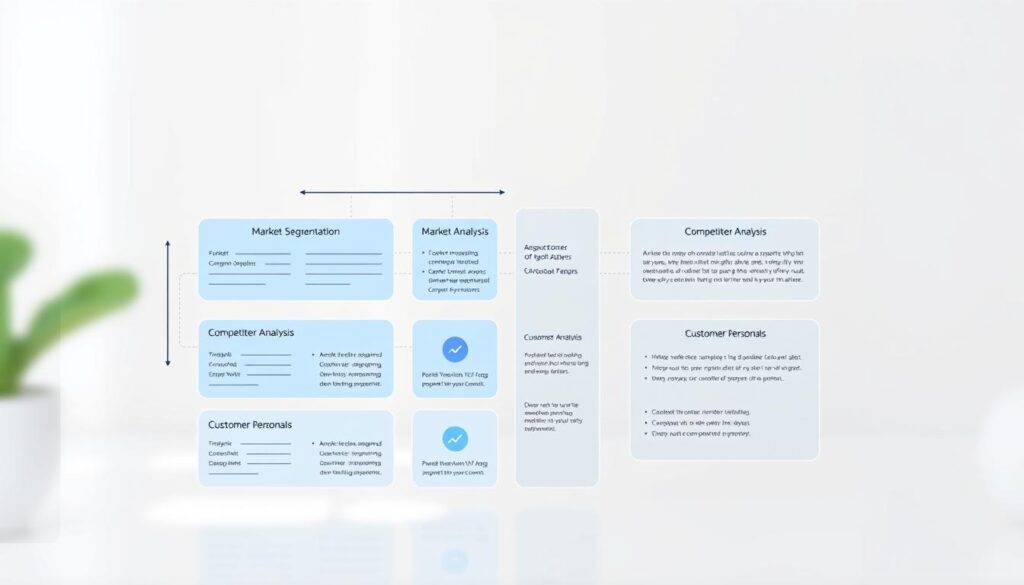Successful product launches require more than clever slogans. Modern enterprises use strategic content frameworks to bridge the gap between product development and customer adoption. Unlike traditional marketing efforts, these specialized approaches align messaging with specific market entry objectives while addressing buyer needs at every stage.
High-performing teams treat content as a precision tool rather than generic collateral. Educational materials build product understanding, promotional assets highlight competitive advantages, and expert insights position brands as industry leaders. This three-tiered approach creates cohesive narratives that drive measurable results.
Cross-department collaboration separates effective strategies from disconnected campaigns. When product developers, sales teams, and customer success managers co-create materials, messaging gains operational relevance. Data analytics then refine these assets, ensuring they resonate with target demographics and adapt to market feedback.
Key Takeaways
- Specialized content frameworks outperform generic marketing for product launches
- Three content types drive success: educational, promotional, and thought leadership
- Cross-functional collaboration ensures messaging alignment across departments
- Data analysis enables real-time content optimization for target audiences
- Strategic content integration accelerates market penetration and revenue growth
Overview of Go-to-Market Strategies in Today’s Business Landscape
In an era where 72% of product launches underperform expectations, modern enterprises rely on precision-engineered frameworks to navigate crowded markets. These blueprints synchronize product positioning, pricing models, and distribution channels into cohesive action plans. Unlike broad marketing strategies, they prioritize rapid adoption through targeted initiatives.
Three pillars define contemporary approaches:
- Operational alignment between product teams and sales pipelines
- Real-time adaptation to shifting consumer behaviors
- Metrics-driven evaluation of channel performance
A recent Forrester study revealed companies using integrated GTM models achieve 3.2x faster revenue growth than peers. “The difference lies in treating market entry as a surgical operation rather than blanket advertising,” notes industry analyst Clara Mendes. This philosophy drives teams to merge customer intelligence with cross-department workflows.
Successful implementations balance short-term launch objectives with long-term brand equity. For instance, efficiency gains emerge when sales enablement materials directly address identified buyer pain points. Teams that continuously refine their tactics based on engagement analytics see 47% higher customer retention rates post-launch.
The evolving digital ecosystem demands strategies that combine human insights with algorithmic precision. Organizations mastering this blend create self-optimizing systems where every asset – from pricing sheets to demo videos – serves measurable business outcomes.
The Evolution of GTM and Its Impact on Business Growth
Businesses navigating today’s competitive landscapes no longer rely on outdated playbooks. The transformation of GTM strategy mirrors broader shifts in consumer behavior and technological capabilities. Early models prioritized product specifications over buyer needs, but modern frameworks center on solving specific challenges through tailored solutions.

Historical Perspectives and Modern Adaptations
Twenty years ago, 83% of campaigns focused on feature lists rather than customer outcomes. This product-centric strategy often failed to connect with decision-makers. “Organizations that fail to adapt risk becoming irrelevant in hyper-competitive sectors,” notes tech strategist Mara Lin.
Current methodologies blend automation with human insights. Artificial intelligence now handles repetitive tasks like lead scoring, freeing teams to craft personalized engagement plans. Platforms analyze market signals in real time, enabling rapid adjustments to outreach tactics.
Shifting Market Dynamics
Digital channels have multiplied customer touchpoints from three primary avenues to over a dozen. Companies now deploy omnichannel campaigns that synchronize email sequences, social interactions, and targeted ads. This approach increases conversion rates by 34% compared to single-channel efforts.
Advanced analytics reveal hidden patterns in buyer journeys. Teams identify which content types resonate at specific stages – educational guides during discovery phases, case studies during evaluation. This precision helps businesses allocate resources effectively while building trust with customers.
The intersection of data science and creative storytelling defines next-generation marketing. Organizations mastering this balance achieve 2.8x faster revenue growth than competitors stuck in traditional paradigms.
Content is King: The Role of Content in GTM Strategy
Effective communication bridges the gap between product value and customer perception. In today’s crowded markets, strategic content acts as the backbone of successful GTM plans. It transforms complex ideas into digestible narratives that guide prospects from awareness to purchase.
- Educational resources like tutorials simplify product understanding
- Promotional materials highlight real-world applications through demos
- Expert analyses establish credibility in niche markets
“The right content mix doesn’t just inform – it builds trust and accelerates decision-making.”
Aligning these formats with buyer journey stages ensures relevance. Awareness-stage blogs answer initial questions. Evaluation-phase case studies address specific concerns. This strategy reduces friction in sales pipelines.
| Type | Purpose | Top Formats |
|---|---|---|
| Educational | Clarify value proposition | Guides, FAQs |
| Promotional | Showcase benefits | Demo videos, testimonials |
| Authority-Building | Position expertise | Industry reports, webinars |
High-performing teams refine content based on target audience interactions. Analytics identify which assets drive conversions, enabling rapid improvements. This approach turns static materials into dynamic tools that adapt to market needs.
go to market content creation: Driving Customer Engagement
In a digital landscape saturated with information, interactive experiences cut through the noise. Businesses that replace static brochures with dynamic content see 68% longer engagement times, according to Content Marketing Institute data. This shift transforms passive viewers into active participants.
Personalized tutorials and interactive one-pagers address specific customer needs better than generic materials. A financial software company increased demo requests by 41% after introducing configurable product simulations. “When users manipulate variables themselves, understanding becomes ownership,” notes UX strategist Lila Corwin.
Three principles elevate engagement:
- Mapping content formats to different customer journey stages
- Embedding real-time feedback mechanisms in assets
- Synchronizing messaging across all touchpoints
Analytics reveal which interactions drive conversions. Heatmaps show where users linger on interactive guides. A/B testing identifies which personalized elements resonate with specific customer segments. This data-driven approach turns content into a precision engagement tool.
Distribution strategies maximize impact. A healthcare tech firm boosted webinar attendance by 33% by pairing LinkedIn campaigns with email sequences featuring interactive agenda builders. Consistent experiences across channels build trust while meeting audiences where they research.
Building a Robust GTM Strategy Template
Organizations scaling operations need structured roadmaps that convert vision into action. A GTM strategy template serves as this blueprint, aligning cross-functional teams around measurable objectives. Its real power lies in transforming abstract ideas into executable steps while maintaining flexibility for market shifts.
Key Components and Essential Elements
Effective templates balance depth with adaptability. Core sections include:
- Market intelligence: Detailed analysis of audience demographics and competitor positioning
- Value architecture: Clear differentiation statements tied to customer pain points
- Channel matrices: Visual mapping of optimal distribution paths
Financial planning modules prove critical for resource allocation. Teams that integrate pricing models with real-time cost analytics achieve 29% faster budget approvals. Risk assessment frameworks further strengthen templates by anticipating potential roadblocks.
Step-by-Step Creation Process
Begin with stakeholder workshops to define core goals. Next, conduct market validation exercises using:
- Customer surveys identifying unmet needs
- Competitor gap analysis
- Pricing elasticity testing
Finalize the template by aligning sales enablement materials with identified buyer journey stages. Regular audits ensure the framework evolves with changing market conditions while maintaining strategic focus.
Market Analysis and Target Audience Insights
Understanding organizational buying patterns separates effective strategies from generic approaches. Harvard Business Review research shows 6.8 stakeholders typically influence each B2B purchase decision. These range from budget holders to end-users, each requiring tailored messaging.

Developing Buyer Personas
Accurate personas map roles like initiators seeking solutions and gatekeepers controlling access. A manufacturing company increased conversion rates by 37% after creating separate profiles for production managers and CFOs. Key elements include:
- Decision-making authority levels
- Preferred communication channels
- Success metric priorities
Identifying Customer Pain Points
Systematic analysis reveals hidden frustrations. Healthcare providers using AI-driven sentiment analysis discovered 42% of administrators prioritized compliance over cost savings. Effective identification methods:
| Role | Common Challenges | Solution Triggers |
|---|---|---|
| Influencers | Lack of peer validation | Case studies |
| Approvers | ROI uncertainty | ROI calculators |
| Users | Workflow disruption fears | Interactive demos |
Market segmentation sharpens focus. Teams analyzing regional purchasing behaviors achieved 29% higher campaign relevance. Continuous feedback loops ensure insights remain current as customer needs evolve.
Crafting a Compelling Value Proposition and Messaging
Clarity cuts through market noise. A razor-sharp value proposition answers three questions: What problem does it solve? Why choose this solution? What makes it different? Teams that nail this trifecta see 53% faster buyer consensus, per Gartner research.
Effective messaging starts with competitive dissection. Analyze rival claims to identify gaps in their offerings. One SaaS company uncovered 22% higher conversion rates by positioning their product as “the only platform merging compliance tracking with real-time risk alerts.”
“Great propositions don’t list features – they paint pictures of transformed outcomes.”
Multi-persona strategies address varied stakeholder needs. A unified brand voice adapts to different priorities without losing core identity:
| Persona | Focus | Content Type |
|---|---|---|
| Technical Buyers | Integration ease | Architecture diagrams |
| Executives | ROI timelines | Benchmark reports |
| End Users | Workflow impact | Interactive checklists |
Pre-launch testing prevents misfires. Run A/B tests comparing emotional versus logical appeals across channels. One fintech firm discovered LinkedIn audiences preferred data-driven claims, while email subscribers responded better to success stories.
Consistency builds recognition. Ensure every touchpoint – from sales decks to support docs – reinforces the core value narrative. Teams auditing their content ecosystems find 41% fewer customer confusion incidents post-implementation.
Distribution Models and Sales Channel Optimization
Strategic channel selection separates market leaders from competitors. Companies must align distribution models with buyer preferences while maintaining operational flexibility. This balance determines whether products reach audiences efficiently or get lost in crowded marketplaces.
Direct versus Indirect Channels
Owned sales channels like e-commerce platforms offer full control over customer experiences. Retail partnerships and affiliate networks extend reach but require brand alignment. B2B enterprises often blend both approaches – 63% use hybrid models according to McKinsey research.
Key considerations include:
- Margin structures across different channels
- Customer support requirements per sales path
- Data collection capabilities for campaign optimization
Embracing Omnichannel Marketing
Consumers interact with brands through 5+ touchpoints before purchasing. Unified marketing efforts across social media, email, and physical locations reduce friction. A clothing retailer increased conversions by 28% after synchronizing inventory data with digital ads.
Successful implementations focus on:
- Consistent messaging across all media platforms
- Real-time performance tracking for rapid adjustments
- Seamless transitions between online/offline channels
Regular audits ensure sales strategies adapt to evolving buyer behaviors. Teams measuring channel-specific ROI achieve 19% higher profitability than those using blanket approaches.
FAQ
How does content creation differ in go-to-market strategies versus general marketing?
Go-to-market content specifically targets conversion-ready audiences with product-led storytelling. Unlike broad brand awareness campaigns, it combines sales enablement materials with educational resources. Companies like HubSpot excel at this by aligning blog posts, case studies, and demo videos to specific buyer journey stages.
What metrics prove a GTM content strategy’s effectiveness?
Key performance indicators include lead-to-customer conversion rates, content engagement depth, and sales cycle velocity. Salesforce tracks content-attributed pipeline growth and deal closure rates to measure impact. High-performing assets often show 3-5x more engagement than generic marketing materials.
Can startups use enterprise-level GTM frameworks effectively?
Yes, with strategic adaptation. Slack scaled its early-stage content strategy by focusing on viral user guides and integration tutorials. The core principles of audience targeting and value demonstration remain consistent, though resource allocation differs. Startups should prioritize high-impact channels like LinkedIn and product documentation portals.
How crucial is sales team involvement in content development?
Vital. Microsoft’s sales insights directly shape battle cards and competitor comparison sheets. Frontline teams provide real-time feedback on customer objections, enabling content creators to address specific pain points. This collaboration ensures materials remain practical and conversion-focused.
What role does AI play in modern GTM content creation?
Tools like Jasper.ai and Copy.ai assist in scaling personalized messaging while maintaining brand voice. However, human oversight remains critical for strategic alignment. Gong.io uses AI to analyze sales calls, generating insights for targeted content that addresses recurring customer concerns.
How often should companies update their GTM content assets?
Quarterly reviews with monthly optimizations work best. Market leaders like Shopify A/B test landing pages weekly during product launches. Evergreen materials require annual refreshes, while campaign-specific content needs real-time adjustments based on performance data and market shifts.



